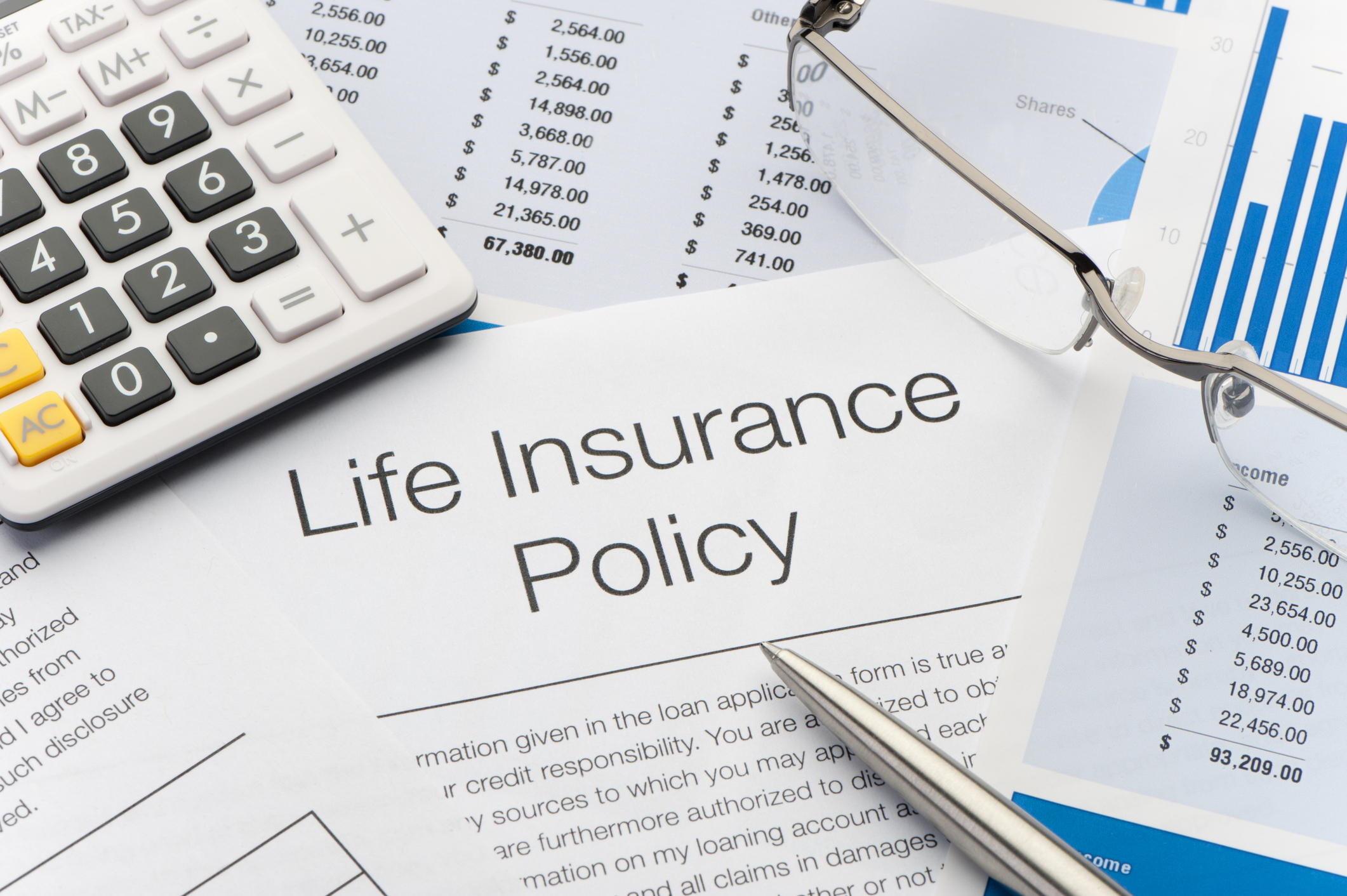Do You Need Life Insurance When You're Young?
Purchasing life insurance when you're young can save you thousands of dollars, while protecting those you may leave behind.

Erin Bendig

Purchasing life insurance when you’re young probably isn’t your top financial priority. Instead, you're likely focusing on other financial concerns, like upcoming student loan payments or buying a home. In fact, according to a 2023 study from life insurance marketing and research firm LIMRA, more than half (52%) of millennials have no life insurance coverage at all. However, purchasing life insurance in your 20s or 30s can be advantageous and more affordable than you may think.
Purchasing life insurance when you’re young
Life insurance falls into two major categories: term and whole life. A term life policy provides benefits for a certain amount of time, usually in increments of 10, 20 or 30 years. Whole life, or permanent life insurance, covers you for life (or as long as you pay the premiums) and has an investing component. Although term insurance has no cash value — your heirs won’t receive any benefits unless you die before the term expires — it’s considerably cheaper than whole life insurance.
If you have young children, a term life insurance policy is a no-brainer, particularly if you’re the main breadwinner in your household. Even if you don’t have children, there may be others who are dependent on your income. For example, if you’re providing financial support for a parent or sibling, a term policy will protect them if something happens to you.
From just $107.88 $24.99 for Kiplinger Personal Finance
Become a smarter, better informed investor. Subscribe from just $107.88 $24.99, plus get up to 4 Special Issues

Sign up for Kiplinger’s Free Newsletters
Profit and prosper with the best of expert advice on investing, taxes, retirement, personal finance and more - straight to your e-mail.
Profit and prosper with the best of expert advice - straight to your e-mail.
If you’re single with no dependents but own your home, you may want to buy a policy to keep it in the family. That’s what Brittney Burgett, head of communications at Bestow, an online term life insurance provider, did when she purchased her home in Tampa.
“I didn’t want my mom to worry about what to do with the house if something were to happen to me,” she says, “so I purchased a policy that would more than cover the mortgage and made her the beneficiary.” Burgett has a 30-year, $500,000 term policy that costs less than $30 a month.
You can compare life insurance rates today by using our tool, in partnership with Bankrate, below.
Cost
According to Insurist.com, almost two-thirds of adults overestimate the cost of life insurance. This belief is most commonly held by Millennials and Gen Zers over other generations. Specifically, 32% of Gen Z and 39% of Millennials believe they cannot afford life insurance, and close to a third of all adults estimate that $250,000 in term life insurance for a 30-year-old would cost $1,000 or more a year.
This is far from true — you can compare premium costs for a $500,000 20-year term life insurance policy below, per Moneygeek.
| Age | Average monthly cost | Total cost |
|---|---|---|
| 25 | $28 | $6,720 |
| 35 | $44 | $10,560 |
| 45 | $106 | $25,440 |
| 55 | $286 | $68,640 |
As you can see from the chart, the sooner you purchase life insurance, the cheaper it is. When you’re young, you’re typically healthier than older individuals, which means you pose less of a risk to insurance companies. For this reason, purchasing life insurance in your 20’s, as opposed to your 50’s, can save you thousands of dollars over the course of the policy. Plus, by opening a life insurance policy when you’re young, you’ll be able to lock in low rates before any health conditions develop. A report from LIMRA showed that 49% of individuals with life insurance wished they had purchased their policies when they were younger.
Byron Udell, founder of AccuQuote.com, a life insurance marketplace, says a nonsmoking 28-year-old woman can expect to pay about $16 a month for a 20-year policy worth $500,000 (women typically pay less in premiums than men). She could increase the coverage to $1 million for about $25 a month, Udell says.
How to buy
If you’re working, your employee benefits may include a term life insurance policy. However, if you leave your job, your policy may no longer be valid. Plus, the coverage may fall short of what you need. Workplace policies typically base the death benefit on a flat amount or an amount based on one to two times your annual income. If you have dependents, some experts suggest you get a policy that’s at least 10 times your annual income.
To figure out how much life insurance you need, tally up your expenses and liabilities, such as your mortgage and car payments, and look for a policy that will come close to covering those expenses. If you think that’s not enough, you can add more coverage for a modest amount. You can compare premiums at websites such as AccuQuote.com and Policygenius.com. You may also want to work with an independent insurance agent who can explain your options. You can find an agent at TrustedChoice.com.
Related Content
Profit and prosper with the best of Kiplinger's advice on investing, taxes, retirement, personal finance and much more. Delivered daily. Enter your email in the box and click Sign Me Up.

Rivan joined Kiplinger on Leap Day 2016 as a reporter for Kiplinger's Personal Finance magazine. A Michigan native, she graduated from the University of Michigan in 2014 and from there freelanced as a local copy editor and proofreader, and served as a research assistant to a local Detroit journalist. Her work has been featured in the Ann Arbor Observer and Sage Business Researcher. She is currently assistant editor, personal finance at The Washington Post.
- Erin BendigPersonal Finance Writer
-
 Holiday Tax Scams: 'Tis the Season to be Wary
Holiday Tax Scams: 'Tis the Season to be WaryTax Scams Navigating tax tricks of the holiday season may be daunting, but don't let that destroy your festive spirit
-
 Metro by T-Mobile Is Giving Away This Samsung Galaxy A16: Which Plans Are Eligible?
Metro by T-Mobile Is Giving Away This Samsung Galaxy A16: Which Plans Are Eligible?Metro by T-Mobile is offering free Samsung Galaxy A16 phones on eligible plans right now. Here’s how the deal works.
-
 I Drive and Collect Classic Cars: Here’s How I Got Started
I Drive and Collect Classic Cars: Here’s How I Got StartedAre classic cars a hobby or an investment strategy — or both? Either way, the vintage car scene is much cooler and more affordable than you think.
-
 9 Types of Insurance You Probably Don't Need
9 Types of Insurance You Probably Don't NeedFinancial Planning If you're paying for these types of insurance, you may be wasting your money. Here's what you need to know.
-
 My Teen Crashed His Car, and Now Our Insurance Has Tripled. What Now?
My Teen Crashed His Car, and Now Our Insurance Has Tripled. What Now?Dealing with the costly aftermath of a teen car accident is stressful. Here are your options for navigating it.
-
 Your End of Year Insurance Coverage Review Checklist
Your End of Year Insurance Coverage Review ChecklistStop paying for insurance you don't need and close coverage gaps you didn't know about with this year-end insurance review.
-
 Snowbirds: Avoid These 3 Sneaky Insurance Issues
Snowbirds: Avoid These 3 Sneaky Insurance IssuesBefore snowbirds depart for their winter retreat, they should check their insurance coverage for surprises that might arise, or else be on the hook for repairs.
-
 10 Things You Should Know About Buying a Car Today, Even if You've Bought Before
10 Things You Should Know About Buying a Car Today, Even if You've Bought BeforeIf buying a car is on your to-do list, and it's been a while since you went shopping for a new one, this guide will help avoid any nasty shocks in the showroom.
-
 Loyalty Doesn’t Pay: Why Your Car Insurance Keeps Going Up
Loyalty Doesn’t Pay: Why Your Car Insurance Keeps Going UpYou’ve been a good customer, now your premium is creeping up. Here’s why loyalty might be costing you on car insurance.
-
 Protect Your Family From Costly Festive Fails With These Holiday Tips
Protect Your Family From Costly Festive Fails With These Holiday TipsHaving people over this holiday season? Before opening the door to guests, here are some perils to prepare for in advance.
-
 When an Extended Car Warranty is Worth It — and When it's Not
When an Extended Car Warranty is Worth It — and When it's NotGot the "we're trying to reach you about your car's extended warranty" call? Here's what you need to know before buying.